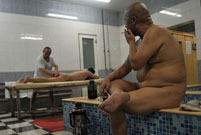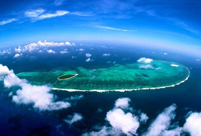 Opps! What a coincidence!
Opps! What a coincidence!
 Breathtaking scenery in Redstone Park in SW China
Breathtaking scenery in Redstone Park in SW China
 Vintage cars show kicks off in London
Vintage cars show kicks off in London
 Gorgeous scenery in NE China
Gorgeous scenery in NE China
 Picturesque Barkol grassland in Xinjiang
Picturesque Barkol grassland in Xinjiang
 Small Wild Goose Pagoda - A World Cultural Heritage Site along the Silk Road
Small Wild Goose Pagoda - A World Cultural Heritage Site along the Silk Road
 Maritime Silk Road Luxuries of the Han Dynasty
Maritime Silk Road Luxuries of the Han Dynasty
 Ciao! Chinese beauties!
Ciao! Chinese beauties!
 An eye feast: BFA freshmen registration
An eye feast: BFA freshmen registration
 Top 10 most lavish weddings
Top 10 most lavish weddings
WELLINGTON, Sept. 30-- Since New Zealand became the first developed nation to sign a free trade agreement with China in 2008, trade has famously soared, cheered on with commentaries about the long-standing and unique bilateral friendship.
But an old black and white documentary -- digitally remastered and set for a relaunch on China's National Day holiday -- recalls a time when the friendship was based on loftier issues than trade.
"Inside Red China" was made by independent-minded New Zealanders who helped to found the New Zealand China Friendship Society and played a significant role in strengthening bonds early in the Cold War.
"In those days it was about peace -- it wasn't about trade. The organization was formed to give aid to China, to stop the lies being told and to get it recognition," said George Andrews, who produced the remastered version.
UNOFFICIAL AMBASSADORS
The group was inspired and encouraged by New Zealander Rewi Alley, who helped to pioneer China's Gung Ho movement during the war against the Japanese, and supported the society's establishment in 1952.
With the conflict in Korea still a recent memory, New Zealand politicians were wary of officially recognizing the Communist government of China in any way.
So it fell to the fledgling society, under the leadership of poet Ron (RAK) Mason, to greet a Chinese classical theatre troupe in 1956 as unofficial ambassadors.
When the Chinese authorities extended a return invitation to the society, Mason accepted, taking four others with him in 1957.
They included professional film-makers Rudall and Ramai Hayward and the result -- a 25-minute documentary -- arguably helped set the tone for subsequent bilateral relationship, said Andrews.
COLD WAR COURAGE
The DVD features a frontal portrait of Chairman Mao Zedong wearing a Maori feather cloak given to him by Ramai Hayward, under the words, "Tiananmen Square, 1957 -- New Zealand and China embrace on film."
Andrews, who is northern vice-president of the New Zealand China Friendship Society, said the film was screened at the society's 60th anniversary in 2012 after it was rediscovered in the national archive.
After so many years, it had many older members "on the brink of tears," Andrews told Xinhua in a phone interview.
"It was a remarkable reminder of how courageous these people were when they founded the society," said Andrews.
"New Zealand governments at the time just wanted nothing to do with them, but they forged ahead and kept the relationship alive -- you have to remember the context of the Cold War."
The Haywards had a unique experience among Western film-makers, filming without interference as they visited Guangzhou, Shanghai, Beijing and Wuhan, recording interviews with a foreign businessman, who had reconciled to the nationalization of his company, and officials within the Christian churches.
They also spoke to ordinary Chinese and captured daily life through the street scenes in China's cities as well as the historic construction of the Wuhan Bridge across the Yangtze River.
CULTURAL MEMORY
"Inside Red China" was screened in the major cinemas in New Zealand's biggest city of Auckland on its release, giving the public a picture of China that was both honest and at odds with the pervasive anti-Communist coverage at the time, said Andrews.
"The film is a reminder of the importance of cultural exchanges. The thing we've learned is how long our cultural memory is," he said.
The scene of Ramai Hayward draping the Maori cloak over Chairman Mao's shoulders best captures that spirit.
Ramai Hayward reportedly said to Mao: "We are the smallest nation in the world, giving this gift to the largest nation in the world."
Mao replied: "The smallest is as great as the largest."
The DVD, being launched at the Chinese Consulate in Auckland on Thursday, features 20 minutes of commentary from NZCFS historian Alistair Shaw and New Zealand Ambassador to China from 2001 to 2004 John McKinnon, as well as footage of the cloak's return to New Zealand for an exhibition at the national museum, Te Papa, last year.
RESPECTING DIFFERENCES
McKinnon, who is also the current ambassador designate to China, gives an account on the mission to track down the cloak in Beijing.
In his commentary on the DVD, McKinnon describes -- speaking in Chinese and English -- the film as an amazing document.
"I think it gave a sense of a society which would have seemed more normal to the viewers outside China than they would have thought China was. I suspect if you went back to the general view of China in Western countries in the 1950s, it would have been a very interesting counterpoint," says McKinnon.
"I think it's got several values. One would be that it is a statement about a link between New Zealand and China which was almost forgotten, but which was enormously of value and significance about that moment in the 1950s.
"And to me, that points to a second reality, which is that although our countries are very different -- and part of what they were doing on that film was to explore those differences -- you can still construct and sustain a relationship in terms of respect for each other along those lines."
For Andrews, releasing the film on DVD with simplified Chinese subtitles, also has a personal significance, both in a professional capacity and in his work with the NZCFS.
"As a film-maker myself, it's about honouring those film-makers. By honoring our past, we find our future."
 Vibrant 21-year-old and her own Cheongsam brand
Vibrant 21-year-old and her own Cheongsam brand Fashion style: Faye Wong vs Cecilia Cheung
Fashion style: Faye Wong vs Cecilia Cheung Jungle law: leopard preys on impala
Jungle law: leopard preys on impala Female bus driver drives Land Rover for commuting
Female bus driver drives Land Rover for commuting Century-old public bath closes door in Beijing
Century-old public bath closes door in Beijing Leading director Wang Quan'an detained for 'buying sex'
Leading director Wang Quan'an detained for 'buying sex' Mixed reaction to smartphone sidewalk
Mixed reaction to smartphone sidewalk Amazing aerial photos of China's Xisha Islands
Amazing aerial photos of China's Xisha Islands Top 10 world's highest-paid models 2014
Top 10 world's highest-paid models 2014 Lingerie show at 2014 Miss China
Lingerie show at 2014 Miss China Songstress Li Xianglan dies at 94
Songstress Li Xianglan dies at 94 Police recruiting posters
Police recruiting posters Anshun Daxi- Living fossil of Chinese drama
Anshun Daxi- Living fossil of Chinese drama Urban farmers in China
Urban farmers in China 'Firepower-2014 Weibei'military exercise
'Firepower-2014 Weibei'military exerciseDay|Week|Month